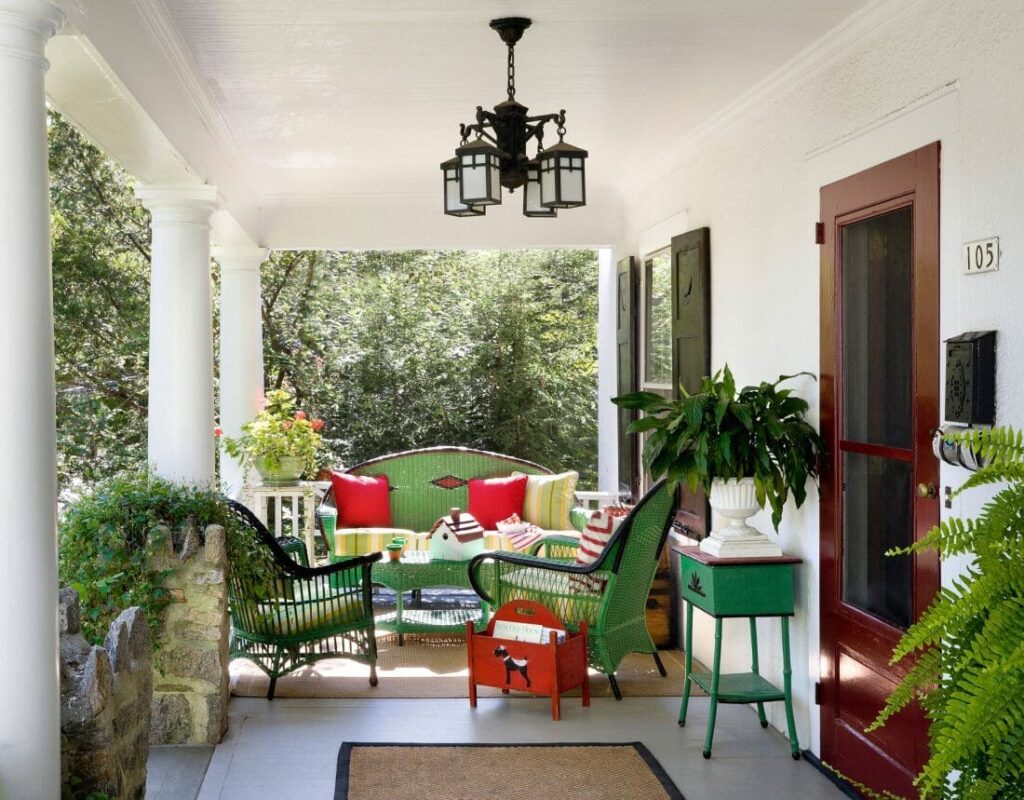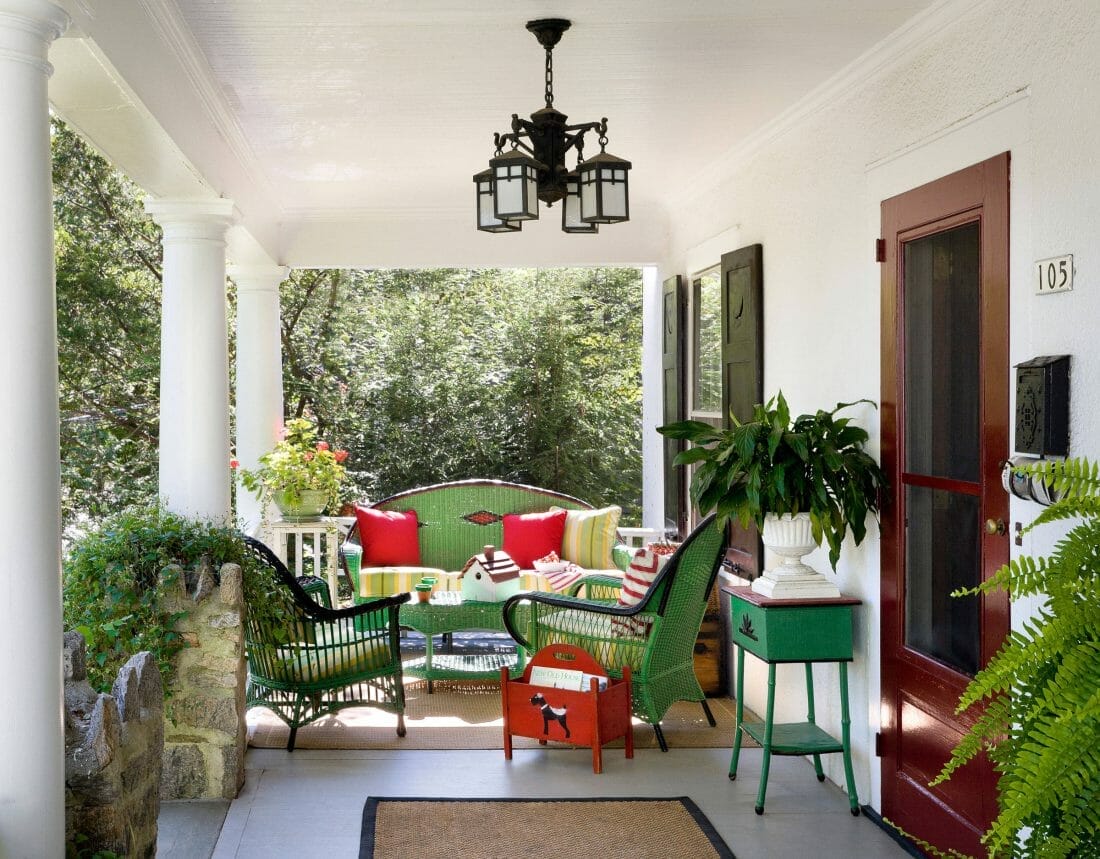
Front Porch Plants for Winter: Adding Color and Life to Your Entryway
As the days grow shorter and temperatures drop, many homeowners find their front porches looking bleak and bare. But winter doesn’t have to mean a drab entryway. With the right front porch plants for winter, you can maintain a welcoming and vibrant curb appeal throughout the colder months. Choosing the right front porch plants for winter is crucial for their survival and your aesthetic enjoyment. This article explores the best options for adding color, texture, and life to your front porch during winter, ensuring a cheerful welcome for you and your guests.
Understanding Winter Hardiness and Plant Selection
Before diving into specific plant recommendations, it’s essential to understand plant hardiness zones. These zones indicate which plants can survive the average minimum winter temperature in a particular region. Research your local hardiness zone and select front porch plants for winter accordingly. Keep in mind that plants in containers are more susceptible to temperature fluctuations than those planted in the ground. Consider moving your potted front porch plants for winter to a more sheltered location during particularly harsh weather.
Evergreen Options for Year-Round Interest
Evergreens are a classic choice for winter containers, providing consistent greenery and structure. Here are some excellent evergreen front porch plants for winter:
- Boxwood (Buxus): Boxwoods are versatile evergreens that can be shaped into various forms, adding a touch of formality to your porch. They are relatively low-maintenance and can tolerate cold temperatures.
- Dwarf Alberta Spruce (Picea glauca ‘Conica’): These small, conical evergreens add a touch of Christmas charm to your entryway. They are slow-growing and require minimal pruning.
- Juniper (Juniperus): Junipers come in a variety of shapes and sizes, offering diverse options for your winter containers. They are drought-tolerant and relatively easy to care for.
- Yew (Taxus): Yews are shade-tolerant evergreens that can be pruned into hedges or left in their natural form. They provide a dark green backdrop for other colorful plants.
Adding Color with Winter-Blooming Flowers
While many flowers fade with the onset of winter, some varieties bloom even in the coldest months. These front porch plants for winter can brighten up your entryway and provide a welcome splash of color:
- Winter Heath (Erica carnea): Winter heath produces masses of small, bell-shaped flowers in shades of pink, purple, and white. It blooms from late winter to early spring and thrives in well-drained soil.
- Hellebore (Helleborus): Also known as Lenten rose, hellebores offer elegant, nodding flowers in a range of colors, including white, pink, purple, and green. They are shade-tolerant and bloom from late winter to early spring.
- Pansies (Viola × wittrockiana): Pansies are cold-hardy annuals that come in a wide variety of colors and patterns. They can tolerate light frosts and will continue to bloom throughout the winter in milder climates.
- Cyclamen (Cyclamen persicum): Cyclamen produce delicate, butterfly-like flowers in shades of pink, red, white, and purple. They prefer cool temperatures and well-drained soil.
Berries and Foliage for Visual Interest
Even without flowers, berries and interesting foliage can add texture and color to your winter containers. Consider these front porch plants for winter:
- Winterberry (Ilex verticillata): Winterberry shrubs are known for their bright red berries that persist throughout the winter. They add a festive touch to your entryway and attract birds.
- Red Twig Dogwood (Cornus sericea): Red twig dogwood is a deciduous shrub with vibrant red stems that provide a striking contrast against the winter landscape.
- Variegated Ivy (Hedera helix): Variegated ivy adds a trailing element to your containers with its green and white foliage. It is relatively low-maintenance and can tolerate shade.
- Ornamental Cabbage and Kale (Brassica oleracea): Ornamental cabbage and kale offer colorful, textured foliage in shades of green, purple, pink, and white. They are cold-hardy and add a unique touch to your winter containers.
Designing Your Winter Porch Containers
When designing your winter porch containers, consider the following tips:
- Choose the right container: Select containers that are appropriate for the size of your plants and that can withstand freezing temperatures. Terracotta pots can crack in cold weather, so opt for plastic, resin, or metal containers.
- Use well-draining soil: Proper drainage is essential to prevent root rot, especially in winter. Use a high-quality potting mix and ensure that your containers have drainage holes.
- Consider height and texture: Create visual interest by combining plants with different heights, textures, and colors. Use taller plants as a backdrop and shorter plants to fill in the gaps.
- Add seasonal accents: Incorporate natural elements such as pinecones, berries, and evergreen branches to enhance the winter theme.
- Water sparingly: Plants require less water in winter than in summer. Water only when the soil feels dry to the touch.
Protecting Your Plants from Harsh Weather
While the plants listed above are generally cold-hardy, it’s still important to protect them from extreme weather conditions. Here are some tips for protecting your front porch plants for winter:
- Move containers to a sheltered location: During periods of extreme cold or heavy snow, move your containers to a more sheltered location, such as a garage or shed.
- Wrap containers with burlap or bubble wrap: This will help insulate the roots and protect them from freezing.
- Water deeply before a freeze: Watering deeply before a freeze will help prevent the soil from drying out and protect the roots from damage.
- Avoid fertilizing in winter: Fertilizing can stimulate new growth, which is more susceptible to cold damage.
Maintaining Your Winter Porch Plants
Maintaining your front porch plants for winter requires minimal effort. Here are a few tips:
- Remove dead or damaged foliage: Regularly remove any dead or damaged foliage to prevent the spread of disease.
- Check for pests: Although pests are less active in winter, it’s still important to check your plants for signs of infestation.
- Water as needed: Water only when the soil feels dry to the touch. Avoid overwatering, as this can lead to root rot.
- Enjoy your winter display: Take the time to appreciate the beauty and vibrancy of your winter porch plants.
Beyond Plants: Decorating Your Winter Porch
While front porch plants for winter are a great start, consider adding other decorative elements to enhance your porch’s winter appeal. String lights can create a warm and inviting atmosphere, while a festive wreath on the door adds a touch of holiday cheer. Consider adding a cozy bench or rocking chair with warm blankets and pillows for a comfortable and inviting space. [See also: Winter Porch Decorating Ideas]. By combining plants with other decorative elements, you can create a welcoming and stylish winter porch that you and your guests will enjoy.
Choosing the Right Plants for Your Style
The best front porch plants for winter are those that reflect your personal style and complement your home’s architecture. Whether you prefer a formal, traditional look or a more casual, rustic vibe, there are plants that can help you achieve your desired aesthetic. Consider the color of your home’s exterior and choose plants that complement it. Think about the overall theme you want to create and select plants that fit that theme. With careful planning and selection, you can create a winter porch that is both beautiful and functional.
Conclusion: Embrace the Beauty of Winter with Front Porch Plants
Don’t let the winter blues get you down. With the right front porch plants for winter, you can create a welcoming and vibrant entryway that will brighten your spirits and impress your guests. By choosing cold-hardy plants, providing proper care, and adding decorative accents, you can transform your porch into a winter wonderland. So, embrace the beauty of winter and create a porch that you’ll love all season long. Choosing the right front porch plants for winter will make all the difference. Remember to consider your local climate and choose plants that are suited to your growing conditions. With a little planning and effort, you can create a stunning winter display that will bring joy to your home.

